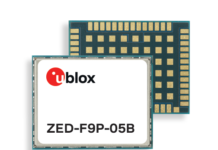
The Wireless Broadband Alliance (WBA) today published “Wi-Fi 6/6E for Industrial IoT: Enabling Wi-Fi Determinism in an IoT World.” This paper explores how Wi-Fi’s latest features are ideal for meeting the unique, demanding requirements for a wide variety of existing and emerging IIoT applications. This includes manufacturing/Industry 4.0 and logistics, involving autonomous mobile robots (AMRs), automated ground vehicles (AGVs), predictive maintenance and augmented/virtual/mixed reality (AR/VR/MR).
For example, manufacturers are increasingly using IIoT sensors for vibration, temperature and lubricant viscosity to catch emerging equipment problems before they result in extensive, expensive downtime. Other IIoT sensors provide real-time insights about production output, inventory levels and asset locations. Wireless has become the preferred way to network these sensors because it’s faster and cheaper to deploy than copper or fiber.
“As more equipment is monitored, wiring becomes prohibitive,” the paper says. “Industry is moving towards the inclusion of wireless technologies to lessen the cost of obtaining more information about their processes. In one recent case in the oil and gas industry, moving to a wireless installation resulted in a 75% cost reduction in installation.”
Produced by the WBA’s Wi-Fi 6/6E for IIOT work group, led by Cisco, Deutsche Telekom and Intel the white paper provides an overview of Wi-Fi 6 and 6E capabilities that are ideal for sensors and other IIoT applications, such as:
· Scheduled access (SA) enabled by trigger-based (TB) uplink (UL) orthogonal frequency domain multiple access (OFDMA) in Wi-Fi 6 provides the ability to reduce or eliminate contention and bound latency (e.g. 99 percentile). This leads to increased levels of determinism applicable to all real-time and IIOT applications.
· Wi-Fi 6 provides many deterministic QoS capabilities, such as the traffic prioritization that is a key component of Time-Sensitive Networking (TSN) for Industry 4.0 applications. Another example is Multi-link operation (MLO), a capability that helps provide high reliability for applications that cannot tolerate any packet loss.
· The Fine Timing Measurement (FTM) protocol specified in IEEE 802.11-2016 enables both time-synchronization but also precise indoor range and position/location determination. This can be used for Autonomous Mobile Robots (AMR) and Automatic Guided Vehicles (AGV) applications such as route planning, exception handling and safety-related aspects including collision avoidance based on proximity. This capability does not require additional Wi-Fi infrastructure, so manufacturers can implement it immediately, for instance as part of their Industry 4.0 migration.
· The target-wake-time (TWT) feature added to Wi-Fi 6 provides more efficient power-save and scheduling enhancement. This capability is a good fit for battery-powered IIoT nodes that need to transmit only infrequently, such as a sensor that uploads data only when a motor’s temperature exceeds a certain threshold.
· Wi-Fi 6E supports up to 1.2 GHz of spectrum, making it ideal for use cases that require both multi-Gb/s throughput and determinism, such as industrial AR/VR/MR and sensor fusion.
The 52-page report also includes RF/network deployment guidelines for factory, warehouse, logistics and other use cases. For example, it provides recommendations for leveraging 802.11ax/Wi-Fi 6 scheduling capabilities to optimize traffic patterns and manage critical QoS requirements. Another example is using high-gain directional antennas to increase channel re-use rates and work around metal racks and other signal-attenuating features commonly found in warehouses.
Current Projects
Over three dozen vendors, service providers and other organizations participated in developing the white paper, which describes many of their current projects. Examples include:
· Cisco, Intel and partners are working on use cases involving AMR and AGV, where key requirements include <10-20ms latency, <50km/h speed and .99.9999% reliability.
· Cisco and Mettis Aerospace are working on sensor applications, where requirements include very high reliability, low power consumption and high device density.
· Further work taking place on video-AMR fusion use cases such as collision avoidance, where technical requirements include <20ms latency and <1ms jitter.
· Cisco is working on safety control applications, which require <1-ms latency for applications such as automatically stopping a machine after a sensor detects that the person has left the operating position.
· Cisco, Mettis Aerospace and Intel are working on AR/VR applications with resolutions up to 80K and 90fps, where throughput requirements can be as high as 100 Mb/s.
· Cisco is working on automotive uses cases such as logistics in high-density storage lots, where <60dBm interference is key for reliable operation.
“Wi-Fi 6/6E for Industrial IoT: Enabling Wi-Fi Determinism in an IOT World” is available now as a download at https://wballiance.com/wi-fi-6-6e-for-industrial-iot-whitepaper/.


















